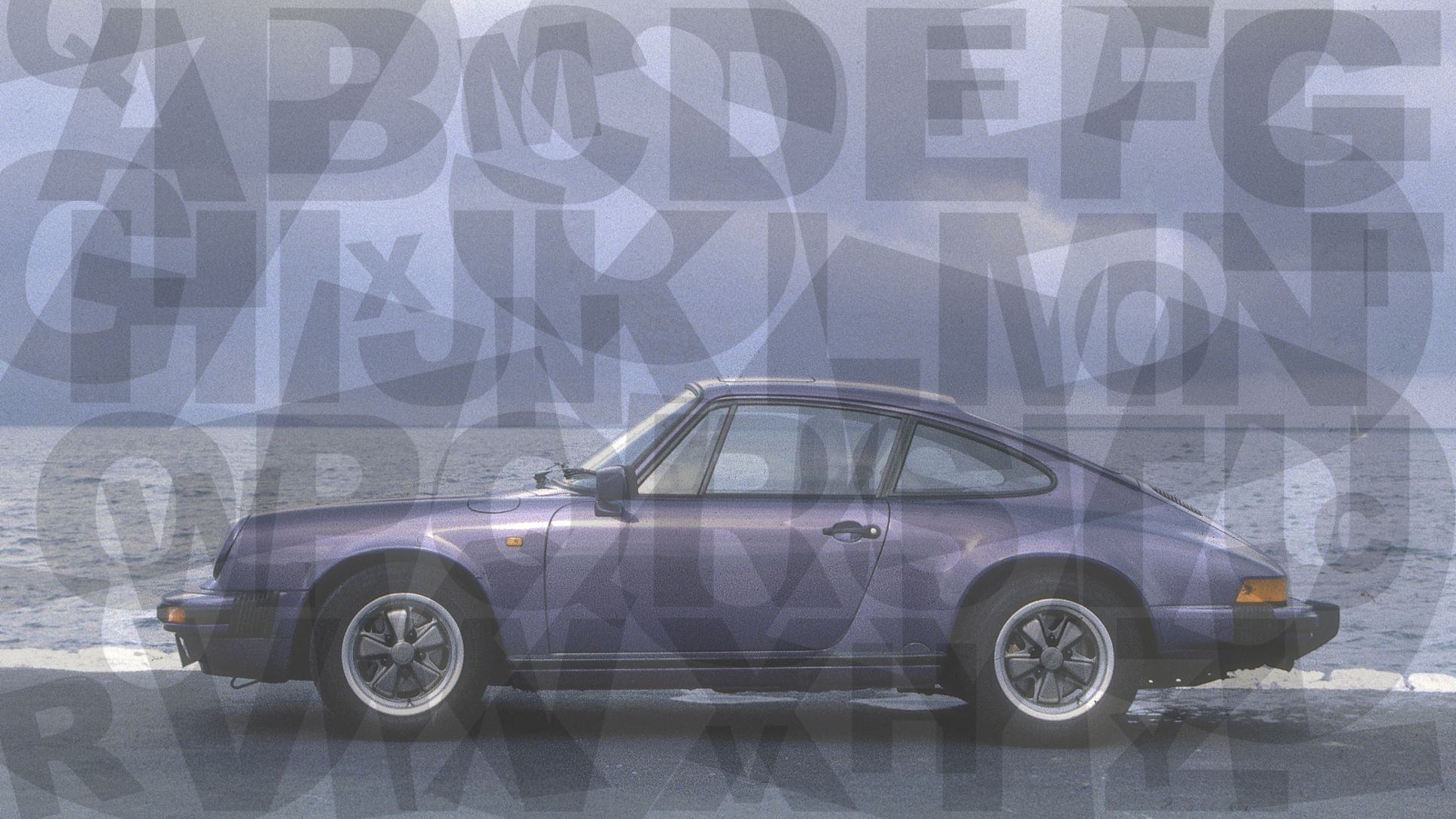E
“Entenbürzel“ or the Ducktail. The advertising slogan for the Porsche Carrera 2.7 RS of 1972/73 was already an insult: “Only 500 men are going to drive it...“ To put it differently: In Zuffenhausen, they prayed that indeed 500 pieces of this lightweight version of the 911, which was rather expensive at the time, would be sold. They had to produce it, though, in order to meet homologation rules. But the car was actually too hot for the street: To make sure it didn’t lift off, Porsche equipped the 2.7 RS with aerodynamic devices at the front and rear. It was the first time Porsche did so. The “Entenbürzel“ – a short ducktail rear spoiler – was mainly in charge of the power take-off. Customers were crazy for this erect poultry’s behind – Porsche eventually sold 1,525 units. And offered an excuse to the angered first 500 customers: “Sorry, we forgot about the ladies…“
E.T. He was the movie star of 1982, the stuffed animal of an entire generation and to this day, probably the only bicycle-flying “extra-terrestrial“ in the universe: E.T. With the movie of the same name and its protagonist, Steven Spielberg created the prototype of a cuddly alien, a crooked creature with long and meager fingers. One of his fingers comes with an embedded flashlight, which he points towards outer space in a tear-jerking scene while muttering the words “phone home“ to understanding kids. That was a long time ago, so it might be unclear why this was the reason for a Porsche part to be called “E.T“ – yet there’s an explanation: Just like E.T.’s finger, the raised, snorkel-like third brake lamp looms out of the rear of the Porsche 911 starting in the year of manufacture 1986 in order to lift the additional brake light above the rear spoiler. Phoning home never really worked with it, though.
F
Ferdinand. Ok, it’s not unusual to call a Porsche “Ferdinand“. That was the name of the founder and his son, too (to make the distinction easier, however, the latter was mostly called “Ferry“), as well as the son of the son (with the byname Alexander, nicknamed »Butzi«). Ferdinand’s granduncle and Ferdinand’s grandson and Ferdinand’s nephew were called Ferdinand. The latter, however, (again) had an -Alexander that followed. With so many Ferdinands around, it’s no surprise that a car of one of these Ferdinands went by the same name – the black coupe Ferdinand. It was the birthday present for Ferdinand Porsche when he turned 75. After the death of his owner, it became one of the first test cars from Zuffenhausen. The Ferdinand made from sheet metal was born in 1950 and was never sold. Instead, it solidly ran for more than 300,000 kilometers on behalf of the company and is now enjoying retirement at the Porsche Museum.
Fuchs Rims. The Fuchs company based in Meinerzhagen probably had no idea that they were actually winning the jackpot when they received the commission from Porsche in the mid-1960s to produce forged alloy rims, at first only for the sportiest model, the Porsche 911 S. The now legendary clover leaf design was penned by Porsche designer Heinrich Klie, who later also gave the 914 its unique shape: five wide spokes, which were initially blank and a black rim star background. Later, the entire rim star was black. With a size of 15 inches, they adorned the 911 S as of 1966 and later also the 914/6 and the 944. They were part of the program until 1989. In 1992, the protection of the registered design expired, and we now have many rims similar to the ones by Fuchs. But only this one is the real one.
G
Grandmother. Grandmothers who are referred to as “grandmother“ are said to be kindhearted, wise and experienced. Okay, hardly any Porsche car has ever been kind-hearted, wise only if the driver was, but experienced, that’s certainly something a Porsche could handle. One model in particular: the Porsche 718 W-RS Spyder. And indeed, for a race car, the lifetime of the open 2-liter, 8-cylinder Porsche was practically biblical, racing from 1961 to 1964. In 1963, it won its class at the Targa Florio in Sicily. The Grandmother won the European Mountain Championship twice. Granted, with an age of 4 years, Porsche’s Grandmother is certainly the youngest grandma of all times – but in car years…
H
Hutch. Nobody really handed down whether rabbits were ever transported in the lockable compartments of the 911. The fact is: If you did without the backseats, the special requests department in Zuffenhausen gave you a luggage rack with two lockable compartments instead. These were referred to as the “Hasenstall“ (rabbit hutch) from then on. But it might also be that the inventor was simply named “Hase“…
Hippie. 1970 – right after Woodstock and things were still dope, bright colors, rebellion against the establishment, euphoria vs. theory, chill instead of kill. Porsche showed momentary solidarity – with the “Hippie“, a long-tail Porsche 917 with a pop paint job, which stirred up the 24 Hours of Le Mans in 1971. Willi Kauhsen and Gerard Larousse were grooving behind the wheel and came in second. By the way, Porsche designers Anatole Lapine and Dick Söderberg were inspired to this highly original design by the dress of a secretary. The psychedelic pattern of her attire obviously left a wicked impression.
I
Indy Engine. In 1980, an Interscope singleseater with a Porsche engine was created for the Indianapolis 500. The V6 turbo engine with watercooled four-valve heads was taken from the legendary 935/78 Moby Dick and was the only 911 engine that reached a rated speed of 9,000 rpm. In terms of output, too, the Indy engine was superlative: 904 hp. After the Indy project was prematurely discontinued in 1980, the modified engine found its way into the 936 Spyder in 1981 and won Le Mans.
J
Jörg Muffler. You’ve heard of perforated, louvered, and chambered mufflers, but none of them comes close to the Jörg muffler. It was developed by Porsche workshop manager Jörg Walter, who was trying to figure out how to bring the Porsche soul to boil. This wise man came up with a sports exhaust system that consisted of a muffler with two long tailpipes. The result: fat sound, great look. Jörg for ever.
Info
Text first published in "rampclassics", issue 4
text: Roland Löwisch

